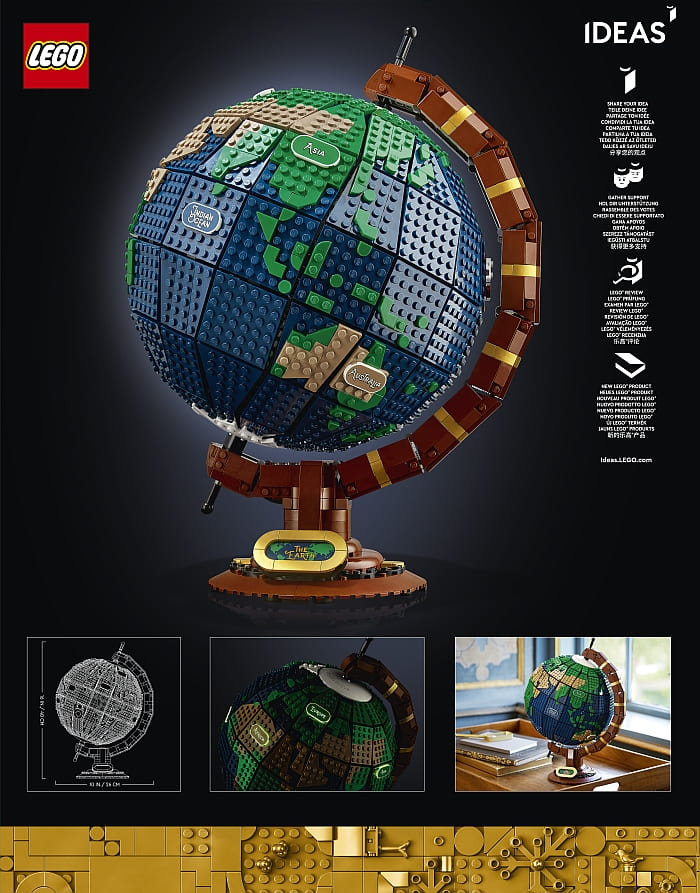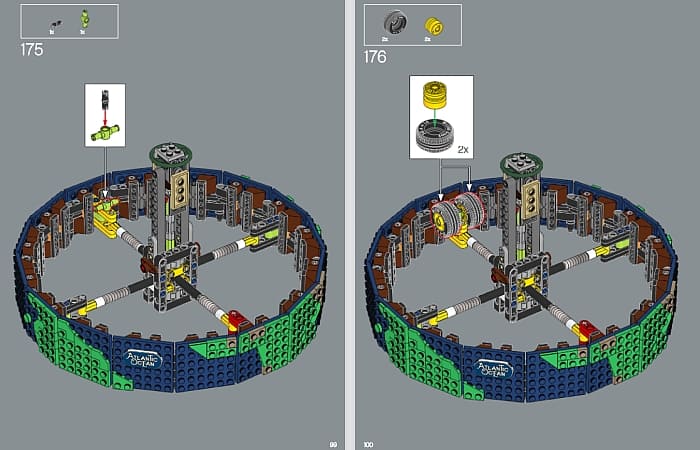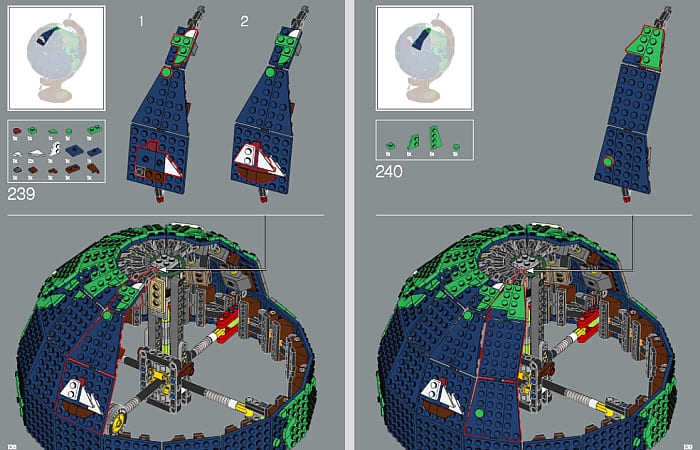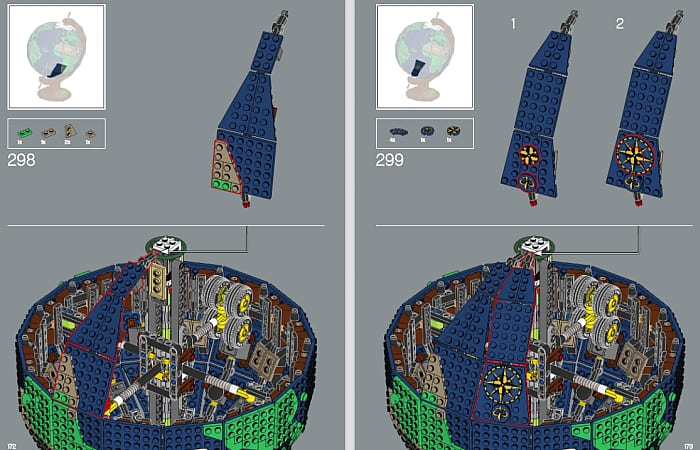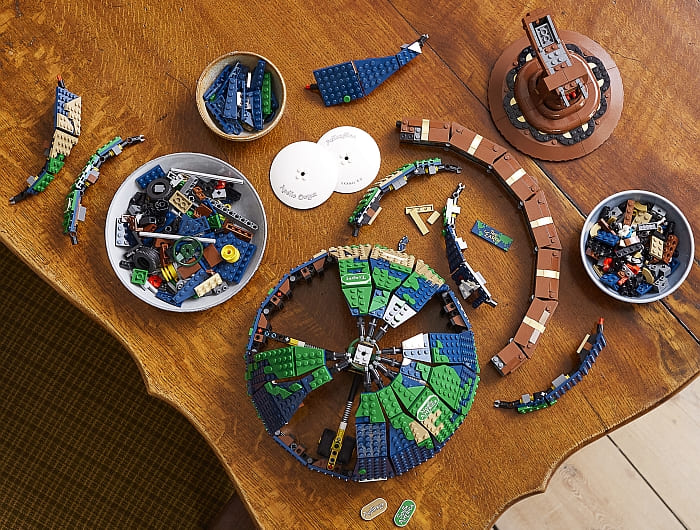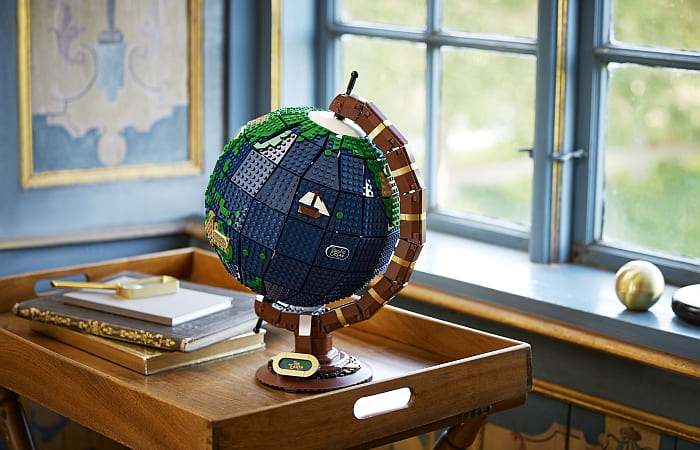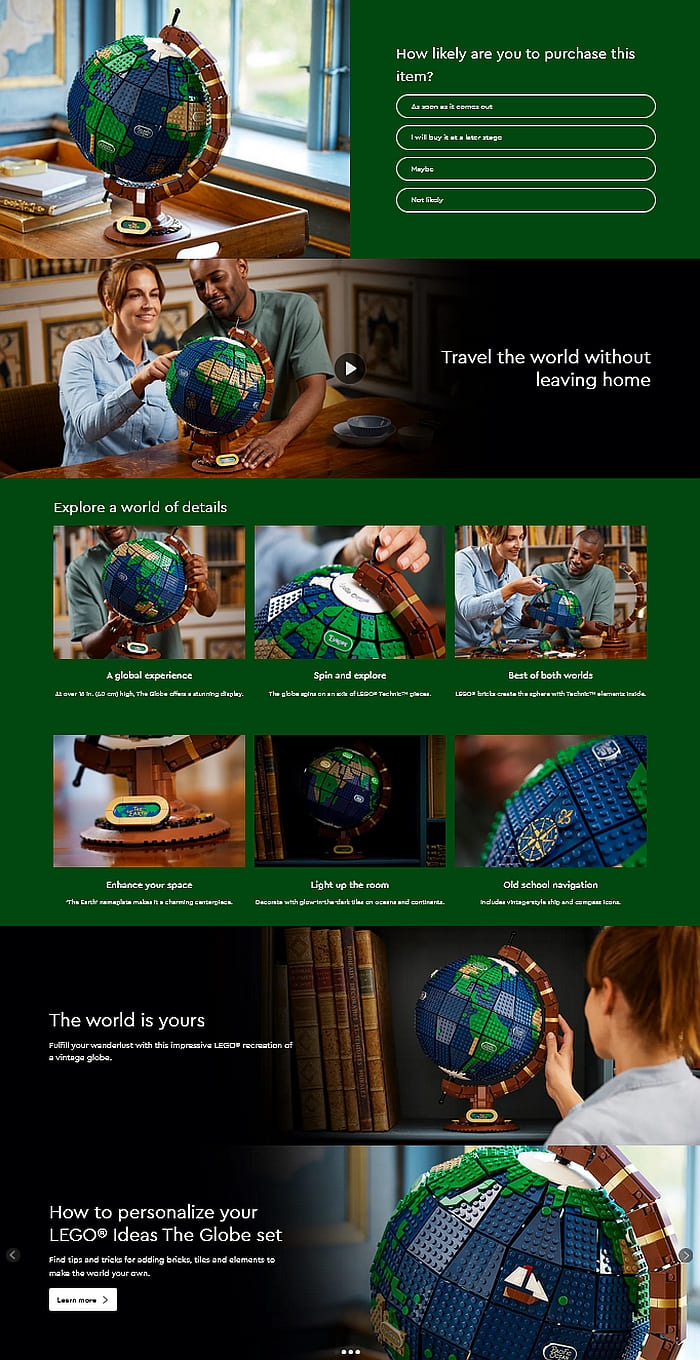With the beginning of October comes a fairly large selection of new LEGO sets as well as a new freebie. Below, we will take a look at all the new sets available this month.
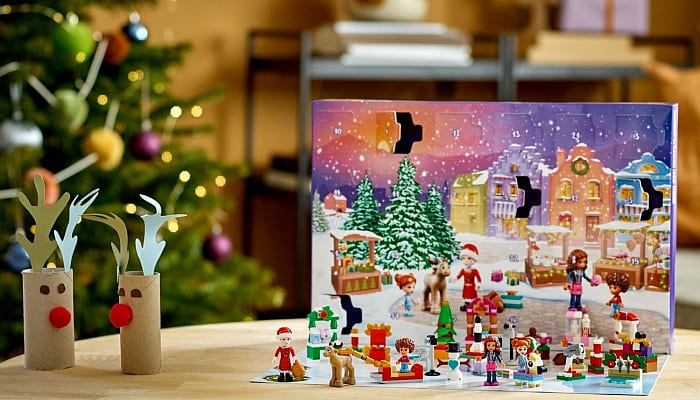
FREE PROMOTIONAL LEGO SET: The #40566 LEGO Ray the Castaway is available with purchases of $120 or more until October 13th. This set is actually quite large with 239 pieces featuring a small island with a makeshift shelter and a couple of nicely designed palm trees as well as a small raft. There are also lots of interesting accessories and creatures like a parrot, two fish, a crab, and two decorative snakes. This offer is valid on all purchases at official LEGO stores and the Online LEGO Shop.

LEGO AVATAR SETS NOW AVAILABLE: The four LEGO Avatar sets we talked about previously are now available. This includes the #40554 LEGO BrickHeadz Jake Sully & His Avatar for $19.99, the #75571 LEGO Avatar Neytiri & Thanator vs. AMP Suit Quaritch for $49.99, the #75572 LEGO Avatar Jake & Neytiri’s First Banshee Flight for $59.99, the #75573 LEGO Avatar Floating Mountains: Site 26 & RDA Samson for $99.99, and the #75574 LEGO Avatar Toruk Makto & Tree of Souls for $149.99. They are available at the LEGO Avatar section of the Online LEGO Shop.
LEGO DUPLO SETS NOW AVAILABLE: LEGO DUPLO for younger kids now offers two excellent sets with lots of cute animals. The #10972 LEGO DUPLO Wild Animals of the Ocean for $19.99, and the #10975 LEGO DUPLO Wild Animals of the World for $129.99. They are available at the LEGO DUPLO section of the Online LEGO Shop.

LEGO IDEAS SET NOW AVAILABLE: The #21336 LEGO Ideas The Office set is now available. The set includes 15 minifigures: Michael Scott, Dwight Schrute, Jim Halpert, Pam Beesly, Ryan Howard, Angela Martin, Oscar Martinez, Kevin Malone, Stanley Hudson, Kelly Kapoor, Phyllis Lapin Vance, Meredith Palmer, Creed Bratton, Toby Flenderson, and Darryl Philbin, plus a LEGO figure of Angela’s cat Garbage. There are also lots of accessory elements referencing hilarious moments, including a stapler in gelatin, Golden Ticket, Dundie trophy, and ‘World’s Best Boss’ mug. The price is $119.99, and the set is available at the LEGO Ideas section of the Online LEGO Shop.
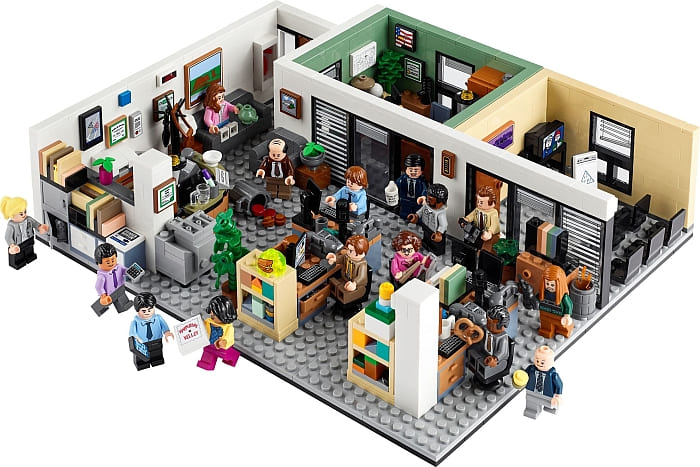
LEGO MARVEL SUPER HEROES SETS AVAILABLE: Based on the Black Panther movies, we get four new LEGO Marvel Super Heroes sets; the #76211 LEGO Marvel Shuri’s Sunbird for $49.99, the #76212 LEGO Marvel Shuri’s Lab for $9.99, the #76213 LEGO Marvel King Namor’s Throne Room for $34.99, and the #76215 LEGO Marvel Black Panther for $349.99. They are available at the LEGO Marvel section of the Online LEGO Shop.
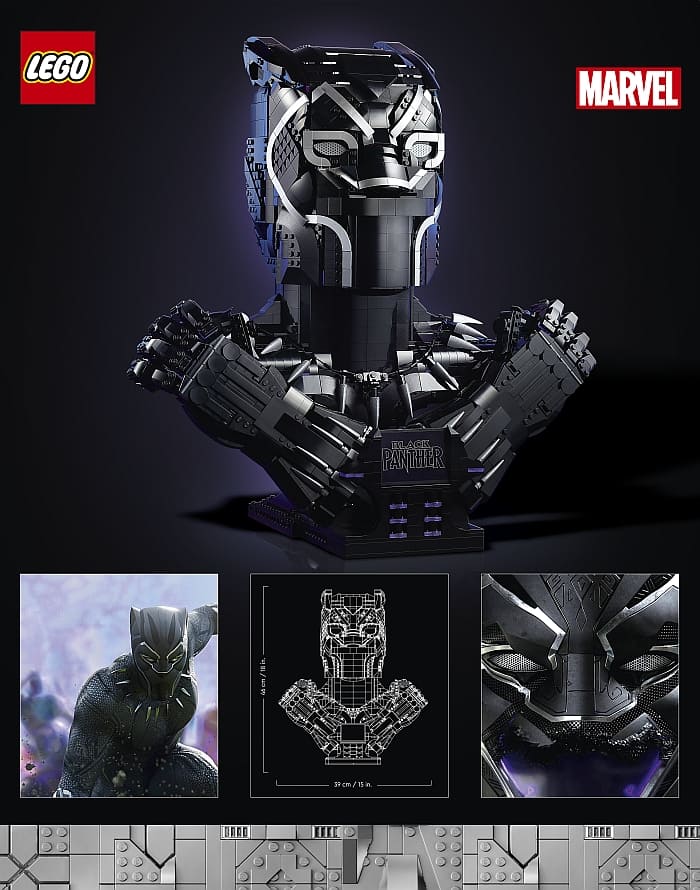
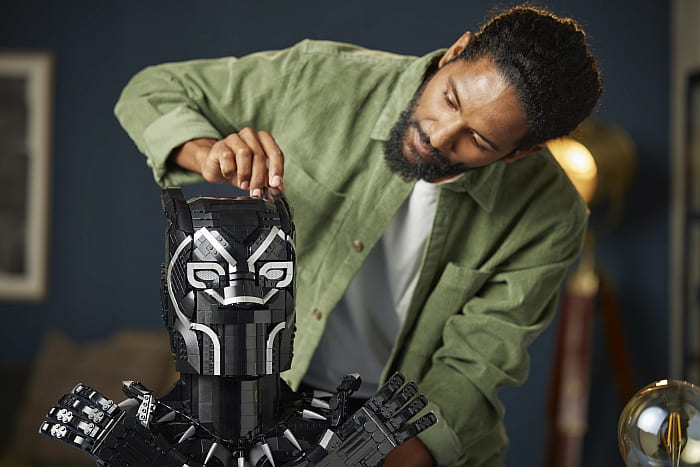
LEGO SUPER MARIO SET NOW AVAILABLE: The #71411 LEGO Super Mario The Mighty Bowser buildable figure is now available. This 2,807-piece set features a highly detailed version of the character with poseable arms, hands, legs, and tail, a movable mouth, a fireball launcher, and a button to control head and neck movements. Overall measurements are 12.5 in. (32 cm) high, 16 in. (41 cm) wide and 11 in. (28 cm) deep, and the price is $269.99. Available at the LEGO Super Mario section of the Online LEGO Shop.

LEGO STAR WARS UCS RAZOR CREST COMING SOON: The massive #75331 LEGO Star Wars Ultimate Collector Series Razor Crest is coming soon! Made up of 6,187 pieces and rich in details, the set includes removable engines and a cockpit, an escape pod, and a minifigure-size carbon-freezing chamber, as well as minifigures featuring the characters of Grogu, the Mandalorian, Mythrol, and Kuiil on a buildable Blurrg model. Once built, you can proudly display your LEGO Star Wars creation with an innovative stand and information plaque. The measurements of the set are as follows: 72 cm long, 50 cm wide, and 24 cm high. It is going to be available for LEGO VIP members starting on October 3rd with a wider release on October 7th. The price is $599.99 and the set is available at the LEGO Star Wars section of the Online LEGO Shop.
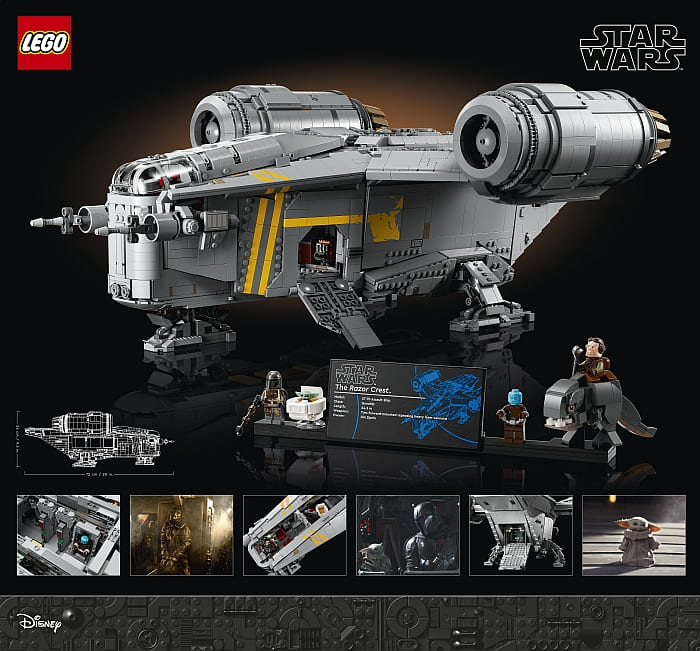
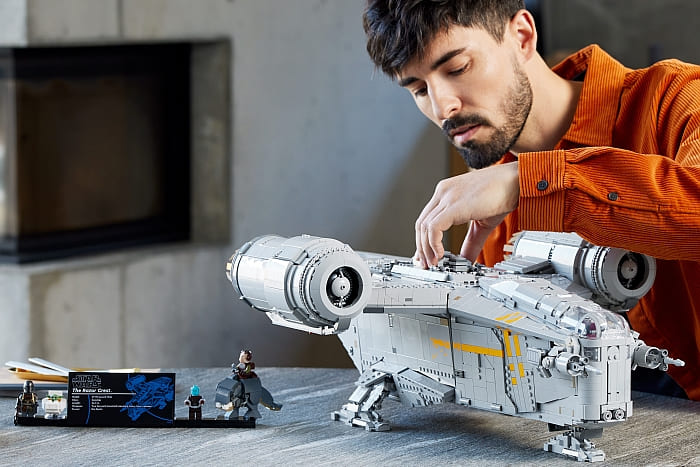
LEGO SEASONAL SETS NOW AVAILABLE: Besides the highly popular LEGO Winter Village sets and LEGO Advent Calendars, there are some other new sets related to Christmas; the #40571 LEGO Wintertime Polar Bears for $12.99, the #40572 LEGO Penguin & Snowflake for $9.99, and the #40573 LEGO Christmas Tree for $44.99. You can find them at the seasonal items section of the Online LEGO Shop.
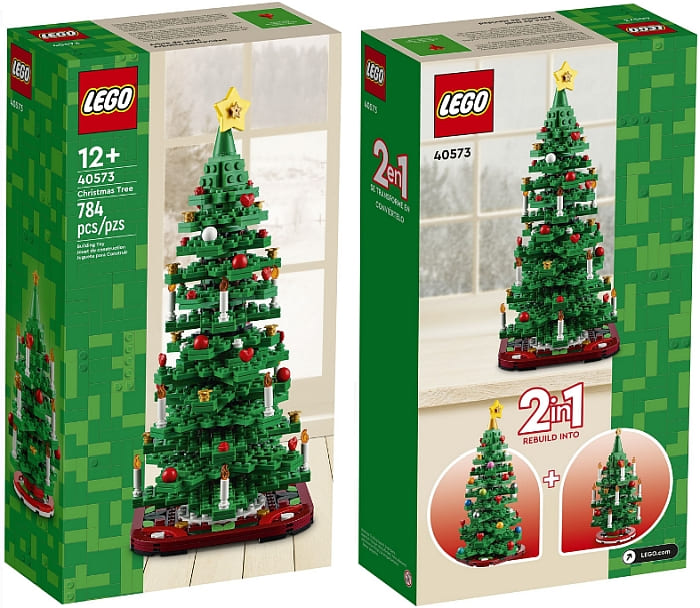
LEGO WINTER VILLAGE SET COMING SOON: The #10308 LEGO Holiday Main Street is the latest in the LEGO Winter Village series. It is going to be available for LEGO VIP members starting on October 3rd with a wider release on October 7th. The price is $99.99 and the set is available at the seasonal items section of the Online LEGO Shop.
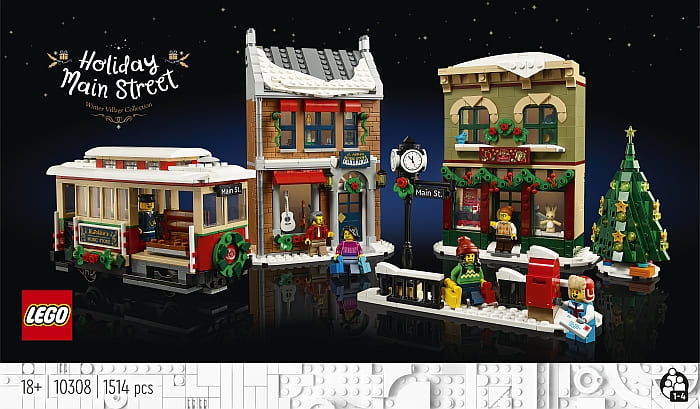
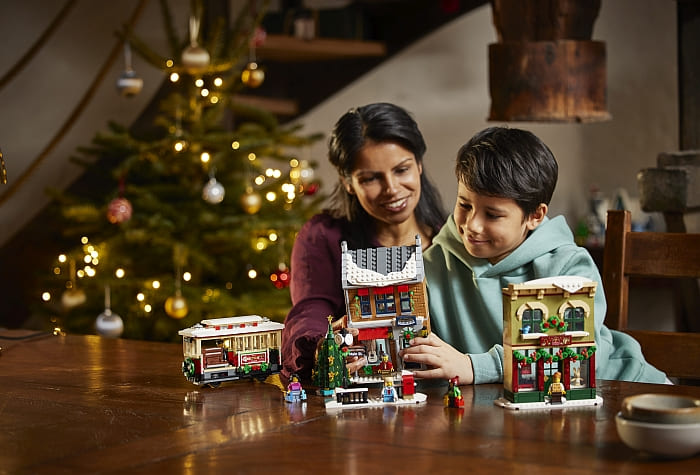
Also, keep an eye on the sales & deals section of the Online LEGO Shop as LEGO is starting to clear out older sets for getting ready for new stock next year. You can find sets 10%-50% off, which might help with your holiday shopping.

What do you think? How do you like the new sets released this month? Do you have any favorites? Are you planning to get any of them? Feel free to share and discuss in the comment section below!
And you might also like to check out the following related posts:
- LEGO Star Wars UCS Mandalorian Razor Crest Press-Release
- LEGO Winter Village Holiday Main Street Press-Release
- San Diego Comic-Con News: More LEGO Avatar Sets!
- LEGO Super Mario The Mighty Bowser Press-Release
- LEGO Marvel Black Panther Press-Release
- LEGO Ideas The Office Available for Pre-Order
➡ LEGO SHOP IN USA: Online LEGO Shop USA
➡ LEGO SHOP IN CANADA: Online LEGO Shop Canada
➡ LEGO SHOP IN UK: Online LEGO Shop UK
➡ LEGO SHOP AUSTRALIA: Online LEGO Shop Australia


